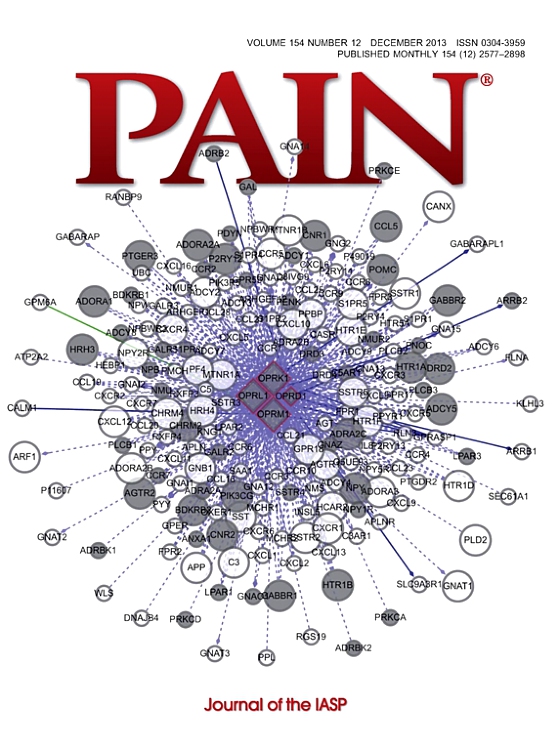Investigating the potential of minocycline in reducing brain inflammation in chronic low back pain: a randomized, placebo-controlled mechanistic clinical trial.
IF 5.9
1区 医学
Q1 ANESTHESIOLOGY
引用次数: 0
Abstract
Our group has shown that translocator protein (TSPO) levels, a putative marker of neuroinflammation, are increased in the brain and spinal cord of patients with chronic low back pain (cLBP). Whether neuroinflammation might be a therapeutic target for this condition is unknown. In this phase II double-blind, placebo-controlled, randomized clinical trial, we sought to evaluate whether the tetracycline antibiotic minocycline, which is commonly used as a glial inhibitor in preclinical models, has an effect on brain TSPO levels in adults with cLBP. Participants randomly received 100-mg minocycline or placebo, once a day for 2 weeks. The primary outcome was the change (pretreatment vs posttreatment) in thalamic TSPO levels, measured using [11C]PBR28 positron emission tomography signal (standardized uptake value ratio) and analyzed with a mixed effect model. Secondary outcome measures included the change in Brief Pain Inventory, severity subscore. Among 60 enrolled participants, 48 completed the trial. Of these, 25 received minocycline (age [years], mean ± SD: 44.6 ± 16.9; 9 female), and 23 received placebo (49 ± 17.1; 9 female). The mean thalamic positron emission tomography standard uptake value ratio was very stable across visits in both groups, with no significant group-by-time interaction (P = 0.956). Similarly, both groups demonstrated a comparable decrease over time in Brief Pain Inventory severity scores (P = 0.018) and no significant group-by-time interaction (P = 0.329). Our results suggest that minocycline, at the tested regimen, may neither reduce brain TSPO levels nor have clinically meaningful effects on clinical pain in patients with cLBP.求助全文
约1分钟内获得全文
求助全文
来源期刊

PAIN®
医学-临床神经学
CiteScore
12.50
自引率
8.10%
发文量
242
审稿时长
9 months
期刊介绍:
PAIN® is the official publication of the International Association for the Study of Pain and publishes original research on the nature,mechanisms and treatment of pain.PAIN® provides a forum for the dissemination of research in the basic and clinical sciences of multidisciplinary interest.
 求助内容:
求助内容: 应助结果提醒方式:
应助结果提醒方式:


